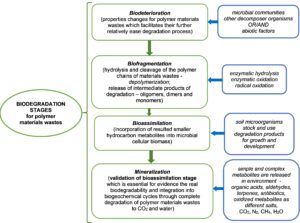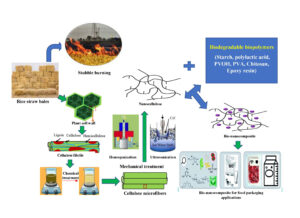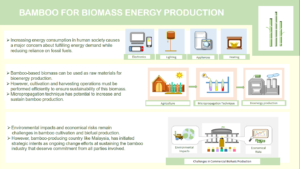Volume 18 Issue 1
Latest articles
- Researchpp 2172-2186Abenghal, L., Lamoudan, H., and Brouillette, F. (2023). "Alkylated phosphorylated fibers: A new substitute for silicone in release paper manufacturing," BioResources 18(1), 2172-2186.AbstractArticlePDF
The production of release coatings has been increasing in recent years because of their use in various fields. However, commercially available release coatings are regarded as non-recyclable. As a consequence, the repulping of these residues is difficult, and their presence in the recycling stream represents an important source of contamination. One solution to this problem is to use new coating materials that can replace the siliconized backing, provided that these new materials are recyclable. As a solution to this problem, the authors propose the use of alkylated phosphorylated fibers to produce an environmentally friendly and inexpensive release paper. The results show that a surface application of hydrophobic phosphorylated fibers reduces the surface free energy of the paper support, as well as the peel strength, which facilitates the separation of the adhesive tape.
- Reviewpp 2187-2212Stelte, W., Reddy, N., Barsberg, S., and Sanadi, A. R. (2023). "Coir from coconut processing waste as a raw material for applications beyond traditional uses," BioResources 18(1), 2187-2212.AbstractArticlePDF
The global production of coconut, mainly for food and oil production, exceeds 62 million tonnes per annum. Large quantities of coconut husk remain unutilized after industrial processing, giving rise to environmental problems. This fails to exploit the potential presented by the extraction of coir, which could have numerous applications. Traditional products such as textiles, mats, and brushes made from coir are increasingly being joined by new, high-value, non-traditional uses. This review article summarizes new fields of application for coir as reinforcing fibers in binderless fiberboards, natural fiber composites, construction materials, solid biofuels, and an absorbent for heavy metals and toxic materials. The use of coir in these new fields will reduce waste and increase sustainability.
- Reviewpp 2213-2261Teacă, C.-A., Ignat, M.-E., Nechifor, M., Tanasă, F., and Ignat, L. (2023). "In-soil degradation of polymer materials waste – A survey of different approaches in relation with environmental impact," BioResources 18(1), 2213-2261.AbstractArticlePDF

Vegetal fibers from different sources, including wood fibers and plant-derived fibers, together with polymer plastics per se (natural, synthetic, and their blends), as well as their combinations as composite materials may generate significant amounts of wastes. These will undergo degradation process under exposure to different environmental factors including microorganisms, climatic changes – e.g. droughts, oxygen, temperature, soil dynamics, UV radiation, etc. This survey offers a concise review of degradation under environmental conditions, mainly after in-soil exposure, of waste made of polymer materials and natural fibers. It also describes the most common methods for evaluation of bioconversion and degradation, as well as the structural properties after degradation (e.g. macroscopic investigation; weight loss; spectrometry – UV, FTIR, NMR; X-ray diffraction for crystalline changes; SEM microscopy; and thermal stability).
- Reviewpp 2262-2270Wang, Z., Zhang, D., Wang, Z., Liang, X., Yang, X., and Wang, J. (2023). "Research progress on dynamic testing methods of wood shear modulus: A review," BioResources 18(1), 2262-2270.AbstractArticlePDF
Wood is a non-homogeneous and orthotropic natural polymer material. It is important to test the wood shear modulus and elastic constants accurately and reliably using dynamic methods. Based on the introduction of the advantages of six common methods for dynamic testing of wood shear modulus, such as free plate torsional mode method, free bar torsional vibration method, and Timoshenko beam iterative method, issues associated with the applicability and accuracy of these methods are also pointed out. Recent methods, such as the free square plate torsional mode method and the square plate static torsional strain method, that were developed to dynamically test the shear modulus of wood and wood composite materials, are presented as effective ways to tackle these issues. These new approaches are expected to provide beneficial technical support for using small specimens, overcoming the size effect of specimens, simplifying the testing procedures, improving the test accuracy, and expanding the application range in the dynamic testing of wood shear modulus. These approaches have practical significance in promoting the industrialization and development of structural engineering, furniture and interior decoration, transportation, military, and musical instrument industries.
- Reviewpp 2271-2287Hadley, T., Hickey, K., Lix, K., Sharma, S., Berretta, T., and Navessin, T. (2023). "Flushed but not forgotten: The rising costs and opportunities of disposable wet wipes," BioResources 18(1), 2271-2287.AbstractArticlePDF
The increasing popularity of single-use wet wipes across a variety of applications has caused environmental and economic challenges. Due to their convenience and low cost, disposable nonwoven wipes have become a necessity in the lives of many. However, consumers rarely consider the end-of-life of these items. Despite efforts from stakeholders, including wipes manufacturers and wastewater experts, there is frequent confusion among consumers regarding appropriate disposal. Many consumers flush wipes that are not compatible with municipal sewer systems, causing considerable damage. Additionally, wipes have poor environmental outcomes, as they often contain non-renewable plastics or are unable to biodegrade under disposal conditions. Previously, the wet wipes industry was projected to grow an average of 6% between 2021 and 2025; however, the use of these disposable items is projected to be much higher due to the COVID-19 pandemic. This paper reviews the market, key challenges, and technical properties of single-use nonwoven wipes. An emphasis is placed on the unique properties and associated challenges of flushable wipes. With strong market demands, consumers are unlikely to abandon single-use wipes, and therefore innovative solutions are required to solve the main environmental and technical challenges associated with flushable and non-flushable wipes.
- Reviewpp 2288-2302Chen, Y., Sun, C., Ren, Z., and Na, B. (2023). "Review of the current state of application of wood defect recognition technology," BioResources 18(1), 2288-2302.AbstractArticlePDF
Wood utilisation is an important factor affecting production costs, but the combined utilisation rate of wood is generally only 50 to 70%. During the production process, the rejection scheme of wood defects is one of the most important factors affecting the wood yield. This paper provides an overview of the main wood defects affecting wood quality, introduces techniques for detecting and identifying wood defects using different technologies, highlights the more widely used image recognition-based wood surface defect identification methods, and presents three advanced wood defect detection and identification equipment. In view of the relatively fixed wood defect recognition requirements in wood processing production, it is proposed that wood defect recognition technology should be further developed toward deep learning to improve the accuracy and efficiency of wood defect recognition.
- Reviewpp 2303-2326Costa Vieira, J., Fiadeiro, P. T., and Costa, A. P. (2023). "Converting operations impact on tissue paper product properties – A Review," BioResources 18(1), 2303-2326.AbstractArticlePDF
Tissue paper is deep-rooted in our daily life because of its different types of products that allow various applications. Tissue paper is a low grammage paper that is mainly characterized by softness, tensile strength, liquid absorption, and elasticity. These characteristics are essential when producing products such as toilet paper, kitchen rolls, hand towels, napkins, and facials. The tissue paper production involves two stages: formation of the tissue paper sheet itself and its converting into different finished products. Converting is characterized by several operations, namely: unwinding, winding, embossing, lamination, perforation, cutting, packaging, and palletizing. The most impacting operation is the embossing, which consists of marking a pattern on the paper sheet by applying pressure, with the intent to produce papers more aesthetically pleasing to the final consumer and/or a way to identify a particular brand. Also, it affects final properties, increasing the liquid absorption capacity and bulk but reducing softness and tensile strength. Converting is complex and has a huge impact on the finished products properties. In this review, the authors explored the different steps of converting and how they impact the different properties of finished tissue products.
- Reviewpp 2327-2350Guo, W., and Huang, J. (2023). "Environmental applications of immobilized and bio-resourced redox mediators: A Review," BioResources 18(1), 2327-2350.AbstractArticlePDF
Redox mediators (RMs), also known as electron shuttles, have been widely reported to promote both biotic and abiotic reductions of oxidized pollutants in water, soil, biogeochemical cycles, and wastewater treatment systems. However, the continuous addition of dissolved RMs is unaffordable and the potential environmental risks remain unknown because most applied RMs are synthetic chemicals. Immobilization technology enables RMs to be attached on non-dissolved supports, avoiding wash-out from the treatment systems. This realizes the reuse of RMs in scaled-up engineering applications and the in-situ remediation. Moreover, renewable natural biomass and their derivatives, such as biochar, have also aroused increased interest because they provide an economical and feasible way to solve the shortcomings of applying soluble RMs. This review presents different RM immobilization methods, which include entrapment, adsorption, and surface modification, as well as the use of bio-resourced RMs. The immobilization procedures and reaction mechanisms of the immobilized RMs and bio-resourced RMs in environmental applications are critically compared and summarized.
- Reviewpp 2351-2385Islam, M., Saini, P., Das, R., Shekhar, S., Sinha, A., and Prasad, K. (2023). "Rice straw as a source of nanocellulose for sustainable food packaging materials: A Review," BioResources 18(1), 2351-2385.AbstractArticlePDF

Asian countries, despite being the largest producers and yielding a significant proportion of the world’s rice, have poor disposal facilities for the harvested rice straw (stubble). Due to higher costs in their handling relative to their value, local farmers prefer the burning of stubble fields, thus creating environmental problems. Even though the government has taken initiatives, no effective solution has been discovered to handle this large agro-waste problem efficiently. In this regard, the utilization of rice straw to develop nanocellulose (NC) products is of interest. Renewability and biodegradability, along with suitable mechanical and thermal properties required for the packaging functions, are key advantages of NC. The bio-nanocomposites prepared using NC and other bio-based polymers are also being widely considered for sustainable food packaging applications due to the reinforcement provided by NC and alternative petroleum-based packaging materials. This review provides an overview of process utilization for preparing NC products using rice straw, pulping methods, and isolation to produce bio-nanocomposites for sustainable food packaging applications. The challenges and future aspects covering the utilization of rice straw for producing NC and eventually producing active packaging materials are also discussed.
- Reviewpp 2386-2407Ku Aizuddin, K. N. A., Lai, K.-S., Baharum, N. A., Thau Lym Yong, W., Ngi Hoon, L., Abdul Hamid, M. Z., Cheng, W. H., and Ong Abdullah, J. (2023). "Bamboo for biomass energy production," BioResources 18(1), 2386-2407.AbstractArticlePDF

Energy consumption in human society has increased as more energy supplies are required to meet the needs of the world’s growing population. However, there is a major concern about fulfilling energy demand while reducing reliance on fossil fuels. Bamboo-based biomass has great potential for use as a raw material for the production of biofuels and bioenergy. Bamboo possesses excellent fuel qualities that can be converted into solid, liquid, and gaseous biofuels. Hence, the cultivation and harvesting operations must be performed efficiently to ensure that the availability of this biomass is sufficient to meet the demand for biofuel production. Several studies have shown that the micropropagation technique has increased bamboo production and that proper bamboo plantation management can benefit both the environment and society. Nevertheless, there are several challenges in bamboo cultivation and biofuel production, such as environmental impact from land management and economic risk from the industrial supply chain. Bamboo-producing countries, including Malaysia, have initiated several policies to propose strategies for sustaining the bamboo industry.
